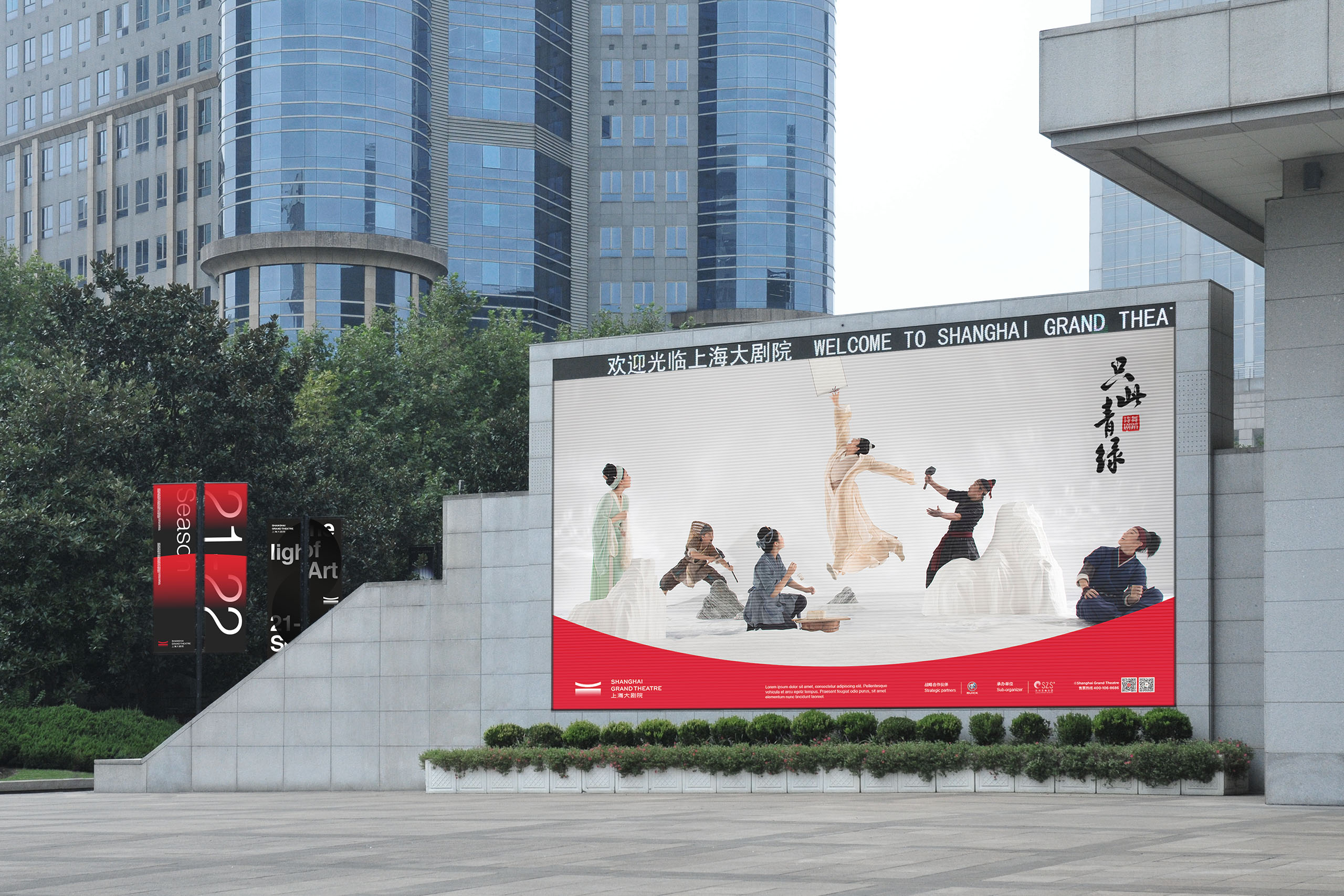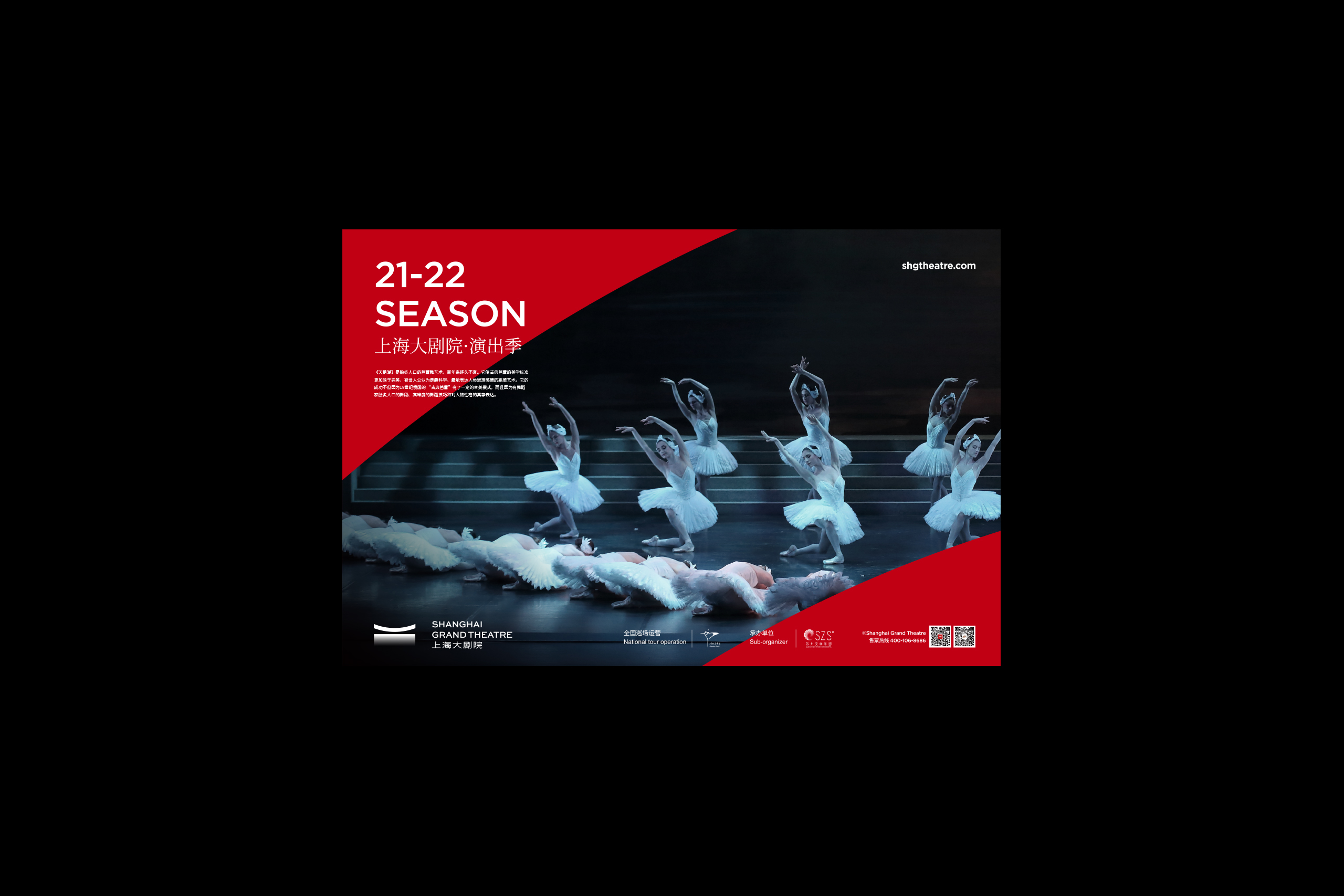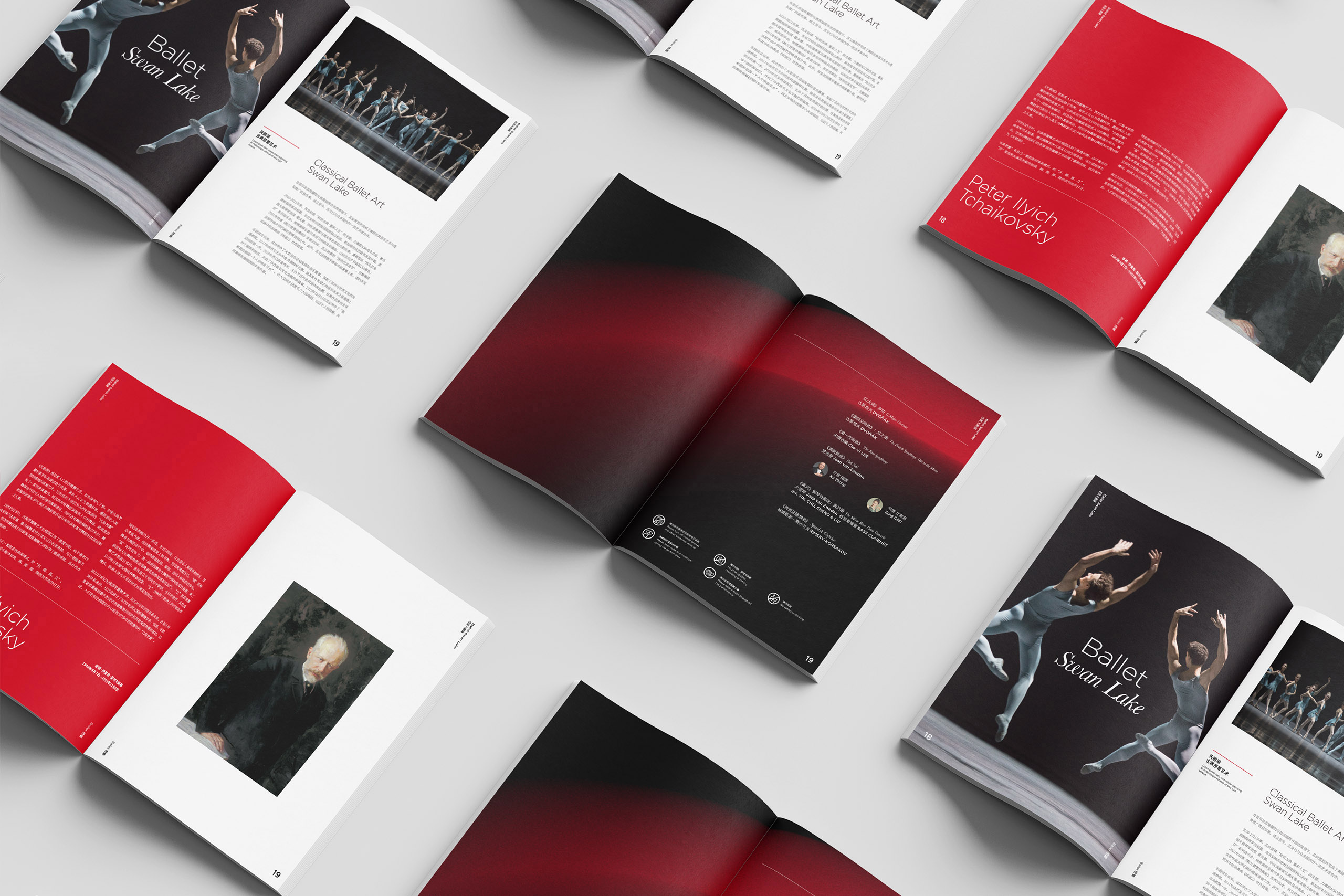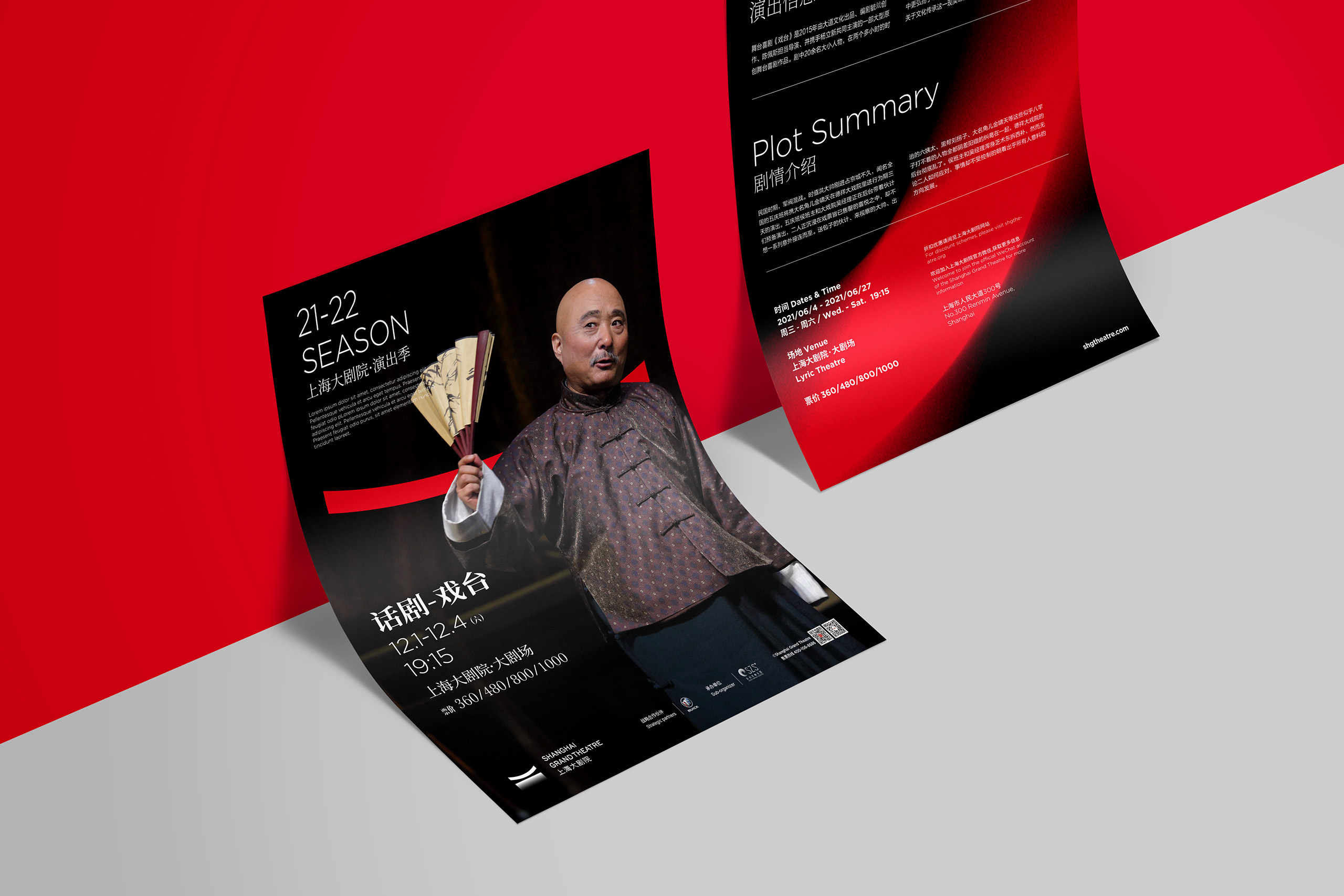The Shanghai Grand Theatre, the first high-level comprehensive theatre in China, brings many top international art performances and opera troupes to China to meet the audience. It is committed to be the icon for Chinese theatres, a highland for artistic performances, and as a cultural hinterland of a city, to break into modern people’s life, and become part of the day-to-day cultural life of more ordinary people.
However, the characteristics of the hand-drawn architecture, cannot applied to cultural content at different levels. It notes the architecture, but does not form the audience’s recognition of the Shanghai Grand Theatre. The audience’s perception is still staying at that the Shanghai Grand Theatre is just a ‘place to watch the show’, they have not further connected with the Theatre itself.
上海大剧院,国内首家高等级综合剧院,将众多国际性顶级艺术表演与剧团带入中国与观众见面。它致力于打造中国剧院的标杆,艺术表演的高地,也作为一座城市的文化腹地,去真正“打入”现代人生活,成为更多普通人日常文化生活的一部分。
然而剧院建筑手绘风格的标识,无法应用在不同层面的文化内容。它记录建筑,但没有形成观众对于上海大剧院品牌认知。观众都还停留在,上海大剧院是一个“来看剧的‘地点’”,没有进一步去和剧院本身产生连接。
The Shanghai Grand Theatre, the first high-level comprehensive theatre in China, brings many top international art performances and opera troupes to China to meet the audience. It is committed to be the icon for Chinese theatres, a highland for artistic performances, and as a cultural hinterland of a city, to break into modern people’s life, and become part of the day-to-day cultural life of more ordinary people.
However, the characteristics of the hand-drawn architecture, cannot applied to cultural content at different levels. It notes the architecture, but does not form the audience’s recognition of the Shanghai Grand Theatre. The audience’s perception is still staying at that the Shanghai Grand Theatre is just a ‘place to watch the show’, they have not further connected with the Theatre itself.
上海大剧院,国内首家高等级综合剧院,将众多国际性顶级艺术表演与剧团带入中国与观众见面。它致力于打造中国剧院的标杆,艺术表演的高地,也作为一座城市的文化腹地,去真正“打入”现代人生活,成为更多普通人日常文化生活的一部分。
然而剧院建筑手绘风格的标识,无法应用在不同层面的文化内容。它记录建筑,但没有形成观众对于上海大剧院品牌认知。观众都还停留在,上海大剧院是一个“来看剧的‘地点’”,没有进一步去和剧院本身产生连接。
The Shanghai Grand Theatre, the first high-level comprehensive theatre in China, brings many top international art performances and opera troupes to China to meet the audience. It is committed to be the icon for Chinese theatres, a highland for artistic performances, and as a cultural hinterland of a city, to break into modern people’s life, and become part of the day-to-day cultural life of more ordinary people.
However, the characteristics of the hand-drawn architecture, cannot applied to cultural content at different levels. It notes the architecture, but does not form the audience’s recognition of the Shanghai Grand Theatre. The audience’s perception is still staying at that the Shanghai Grand Theatre is just a ‘place to watch the show’, they have not further connected with the Theatre itself.
上海大剧院,国内首家高等级综合剧院,将众多国际性顶级艺术表演与剧团带入中国与观众见面。它致力于打造中国剧院的标杆,艺术表演的高地,也作为一座城市的文化腹地,去真正“打入”现代人生活,成为更多普通人日常文化生活的一部分。
然而剧院建筑手绘风格的标识,无法应用在不同层面的文化内容。它记录建筑,但没有形成观众对于上海大剧院品牌认知。观众都还停留在,上海大剧院是一个“来看剧的‘地点’”,没有进一步去和剧院本身产生连接。
The Shanghai Grand Theatre, the first high-level comprehensive theatre in China, brings many top international art performances and opera troupes to China to meet the audience. It is committed to be the icon for Chinese theatres, a highland for artistic performances, and as a cultural hinterland of a city, to break into modern people’s life, and become part of the day-to-day cultural life of more ordinary people.
However, the characteristics of the hand-drawn architecture, cannot applied to cultural content at different levels. It notes the architecture, but does not form the audience’s recognition of the Shanghai Grand Theatre. The audience’s perception is still staying at that the Shanghai Grand Theatre is just a ‘place to watch the show’, they have not further connected with the Theatre itself.
上海大剧院,国内首家高等级综合剧院,将众多国际性顶级艺术表演与剧团带入中国与观众见面。它致力于打造中国剧院的标杆,艺术表演的高地,也作为一座城市的文化腹地,去真正“打入”现代人生活,成为更多普通人日常文化生活的一部分。
然而剧院建筑手绘风格的标识,无法应用在不同层面的文化内容。它记录建筑,但没有形成观众对于上海大剧院品牌认知。观众都还停留在,上海大剧院是一个“来看剧的‘地点’”,没有进一步去和剧院本身产生连接。
The Shanghai Grand Theatre, the first high-level comprehensive theatre in China, brings many top international art performances and opera troupes to China to meet the audience. It is committed to be the icon for Chinese theatres, a highland for artistic performances, and as a cultural hinterland of a city, to break into modern people’s life, and become part of the day-to-day cultural life of more ordinary people.
However, the characteristics of the hand-drawn architecture, cannot applied to cultural content at different levels. It notes the architecture, but does not form the audience’s recognition of the Shanghai Grand Theatre. The audience’s perception is still staying at that the Shanghai Grand Theatre is just a ‘place to watch the show’, they have not further connected with the Theatre itself.
上海大剧院,国内首家高等级综合剧院,将众多国际性顶级艺术表演与剧团带入中国与观众见面。它致力于打造中国剧院的标杆,艺术表演的高地,也作为一座城市的文化腹地,去真正“打入”现代人生活,成为更多普通人日常文化生活的一部分。
然而剧院建筑手绘风格的标识,无法应用在不同层面的文化内容。它记录建筑,但没有形成观众对于上海大剧院品牌认知。观众都还停留在,上海大剧院是一个“来看剧的‘地点’”,没有进一步去和剧院本身产生连接。
Shanghai Grand Theatre
Brand Strategy
Brand Identity
Client: Shanghai Grand Theatre上海大剧院
K-DESIGN AWARD 2022
Golden Pin Design Award 2022
Asia-Pacific Design 2022
Shanghai Grand Theatre
Brand Strategy
Brand Identity
Client: Shanghai Grand Theatre上海大剧院
K-DESIGN AWARD 2022
Golden Pin Award 2022
Asia-Pacific Design 2022
Shanghai Grand Theatre
Brand Strategy
Brand Identity
Client: Shanghai Grand Theatre上海大剧院
K-DESIGN AWARD 2022
Golden Pin Award 2022
Asia-Pacific Design 2022
Shanghai Grand Theatre
Brand Strategy
Brand Identity
Client: Shanghai Grand Theatre上海大剧院
K-DESIGN AWARD 2022
Golden Pin Design Award 2022
Asia-Pacific Design 2022
Shanghai Grand Theatre
Brand Strategy
Brand Identity
Client: Shanghai Grand Theatre上海大剧院
K-DESIGN AWARD 2022
Golden Pin Design Award 2022
Asia-Pacific Design 2022

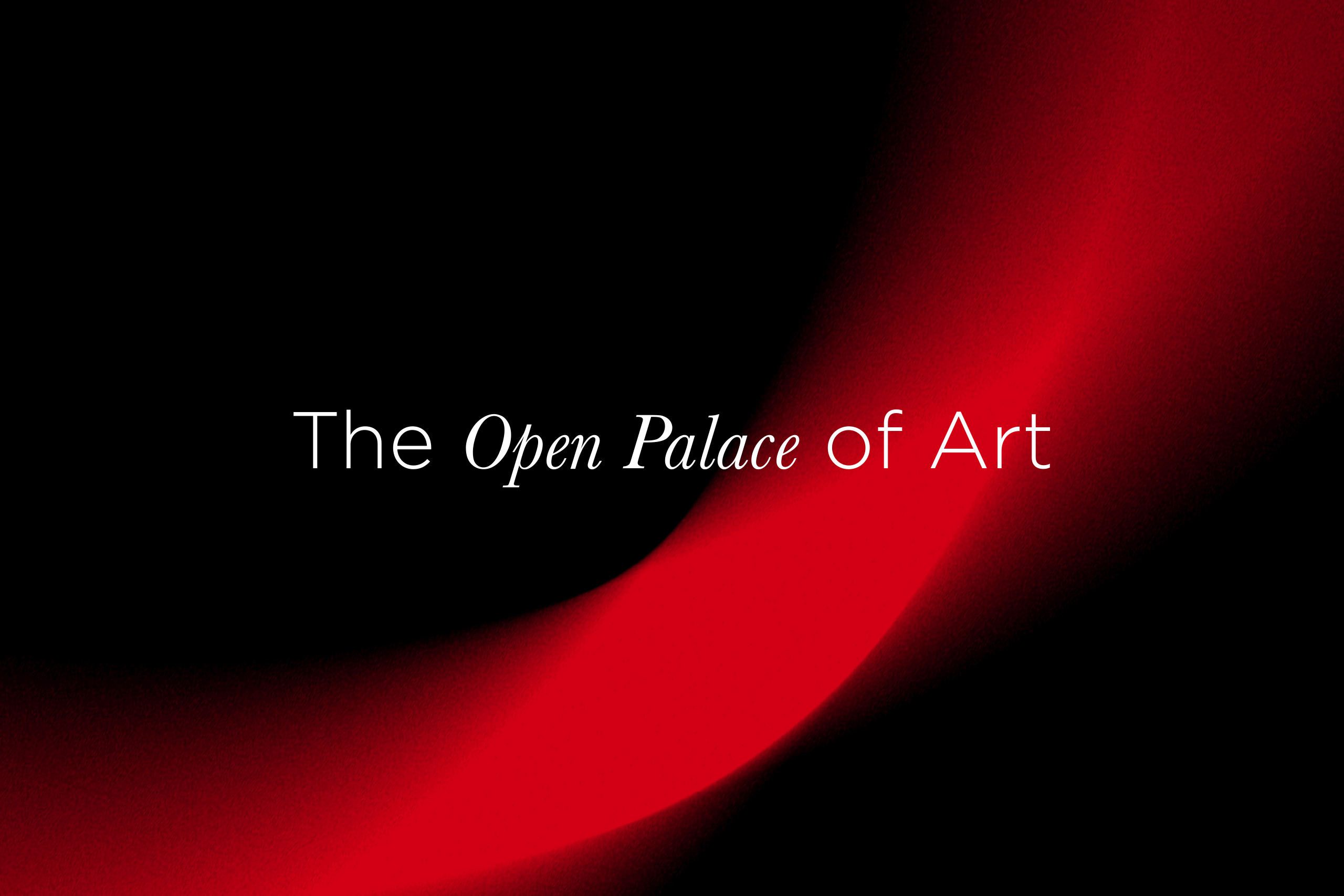
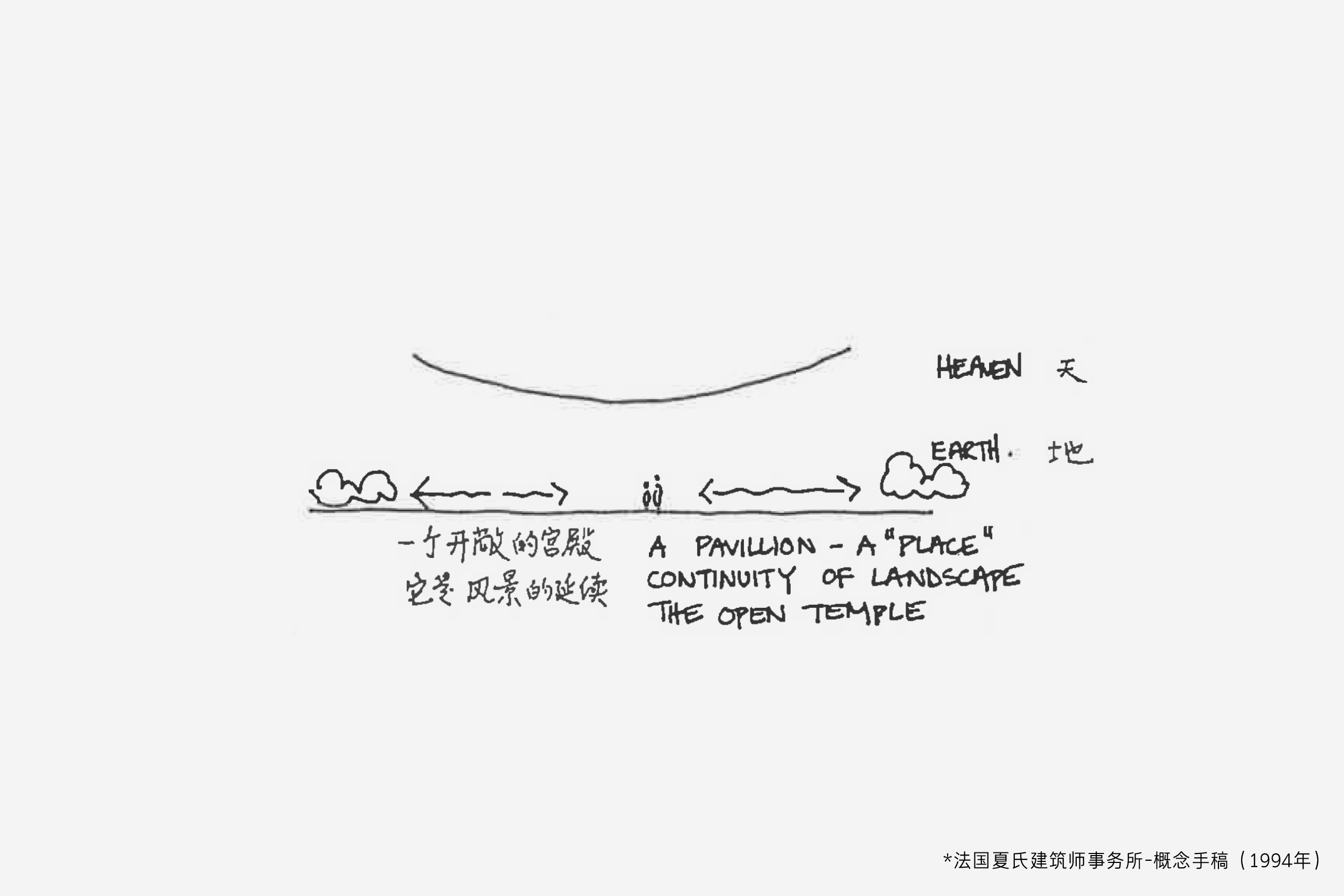



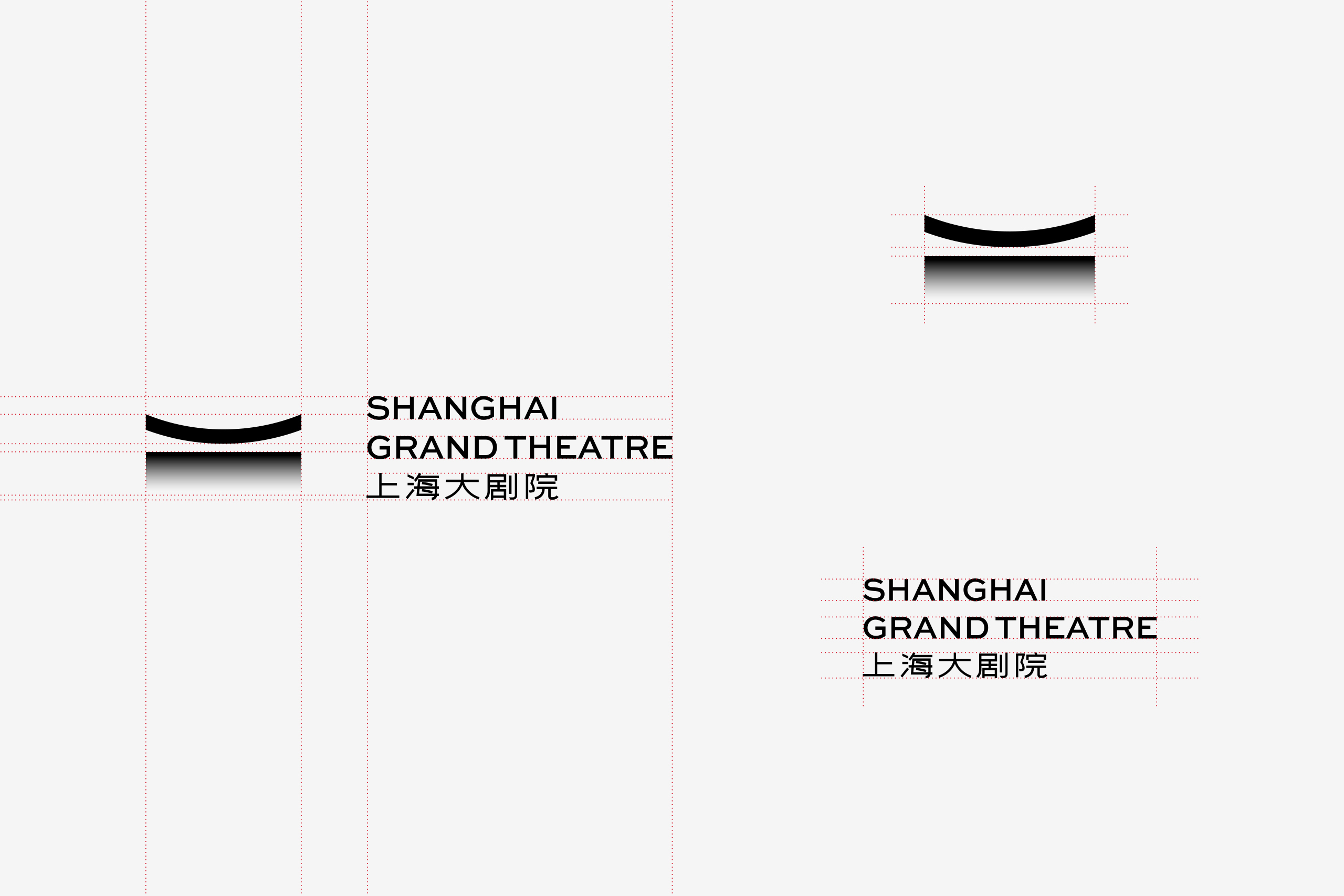
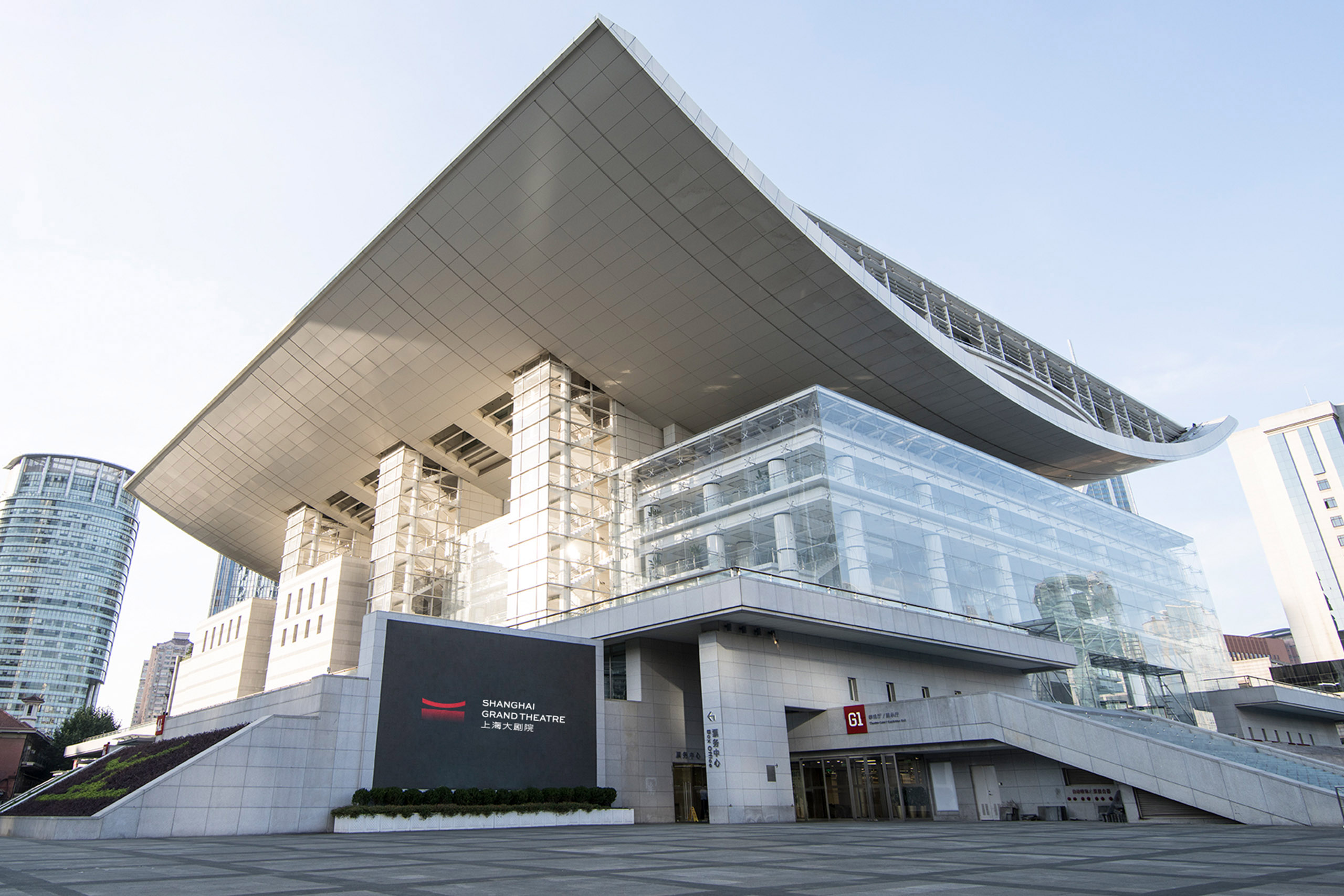
From "depicting architecture" to "presenting brand roles" — QIU hopes to interpret the central role of the Shanghai Grand Theatre in relation to cultural and artistic life through this visual update. While highlighting the uniqueness of stage art, it also tolerates more diversified art forms and cultural expressions, making vision as vibrant as the play. And retain architecture as a visual link, but theatrical art as the core content to truly impress people's hearts.
从“描绘建筑“到“呈现品牌角色” — QIU希望通过此次视觉更新,演绎上海大剧院对真实城市生活的角色。作为文化承载/创造/输出平台,凸显舞台艺术独特性的同时,包容更多元艺术形式与文化表达,让视觉和戏剧一样有穿透力。并保留建筑作为视觉链接,戏剧艺术作为打动人心的灵魂内容。
From "depicting architecture" to "presenting brand roles" — QIU hopes to interpret the central role of the Shanghai Grand Theatre in relation to cultural and artistic life through this visual update. While highlighting the uniqueness of stage art, it also tolerates more diversified art forms and cultural expressions, making vision as vibrant as the play. And retain architecture as a visual link, but theatrical art as the core content to truly impress people's hearts.
从“描绘建筑“到“呈现品牌角色” — QIU希望通过此次视觉更新,演绎上海大剧院对真实城市生活的角色。作为文化承载/创造/输出平台,凸显舞台艺术独特性的同时,包容更多元艺术形式与文化表达,让视觉和戏剧一样有穿透力。并保留建筑作为视觉链接,戏剧艺术作为打动人心的灵魂内容。
From "depicting architecture" to "presenting brand roles" — QIU hopes to interpret the central role of the Shanghai Grand Theatre in relation to cultural and artistic life through this visual update. While highlighting the uniqueness of stage art, it also tolerates more diversified art forms and cultural expressions, making vision as vibrant as the play. And retain architecture as a visual link, but theatrical art as the core content to truly impress people's hearts.
从“描绘建筑“到“呈现品牌角色” — QIU希望通过此次视觉更新,演绎上海大剧院对真实城市生活的角色。作为文化承载/创造/输出平台,凸显舞台艺术独特性的同时,包容更多元艺术形式与文化表达,让视觉和戏剧一样有穿透力。并保留建筑作为视觉链接,戏剧艺术作为打动人心的灵魂内容。
From "depicting architecture" to "presenting brand roles" — QIU hopes to interpret the central role of the Shanghai Grand Theatre in relation to cultural and artistic life through this visual update. While highlighting the uniqueness of stage art, it also tolerates more diversified art forms and cultural expressions, making vision as vibrant as the play. And retain architecture as a visual link, but theatrical art as the core content to truly impress people's hearts.
从“描绘建筑“到“呈现品牌角色” — QIU希望通过此次视觉更新,演绎上海大剧院对真实城市生活的角色。作为文化承载/创造/输出平台,凸显舞台艺术独特性的同时,包容更多元艺术形式与文化表达,让视觉和戏剧一样有穿透力。并保留建筑作为视觉链接,戏剧艺术作为打动人心的灵魂内容。
From "depicting architecture" to "presenting brand roles" — QIU hopes to interpret the central role of the Shanghai Grand Theatre in relation to cultural and artistic life through this visual update. While highlighting the uniqueness of stage art, it also tolerates more diversified art forms and cultural expressions, making vision as vibrant as the play. And retain architecture as a visual link, but theatrical art as the core content to truly impress people's hearts.
从“描绘建筑“到“呈现品牌角色” — QIU希望通过此次视觉更新,演绎上海大剧院对真实城市生活的角色。作为文化承载/创造/输出平台,凸显舞台艺术独特性的同时,包容更多元艺术形式与文化表达,让视觉和戏剧一样有穿透力。并保留建筑作为视觉链接,戏剧艺术作为打动人心的灵魂内容。




